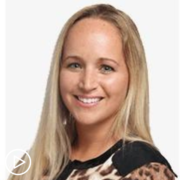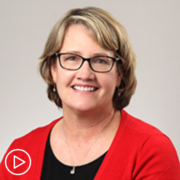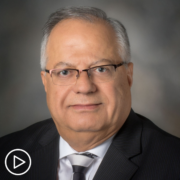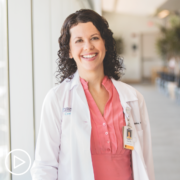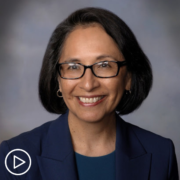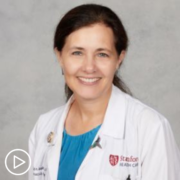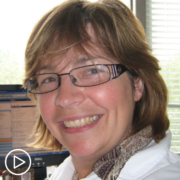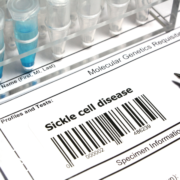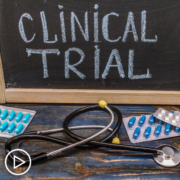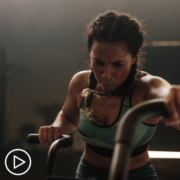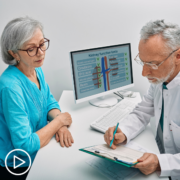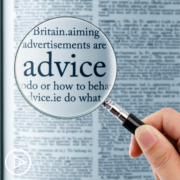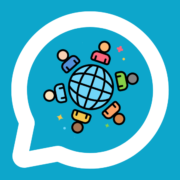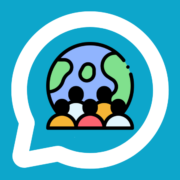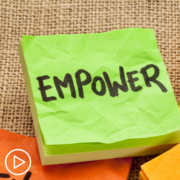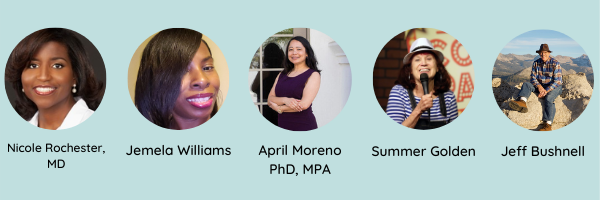Language is constantly evolving in our everyday lives. This is also true of the language we use to describe patienthood. The words we use color how we view our world and how the world perceives us as patients.
‘Empowerment’ is one of those words frequently attached to patients. The term is most often used to emphasize the value of having patients assert greater control over their health care.
In a previous post, I set out to explore what it means to be an empowered patient from the perspective of patients themselves. I outlined seven essential facilitators of patient empowerment, from access to information, to health and digital literacy. Now, two years later, I want to revisit the theme of patient empowerment to investigate what, if anything, has changed in the interim.
Is patient empowerment still a concept that resonates with patients?
Reaching out to my online network of patient advocates I received an overwhelming response to this question. The following quotes, which I’ve synthesised around the most common themes, demonstrate a rich source of insight. Some of the responses you may find surprising as they offer a new perspective on the evolving nature of what it is to be a patient in today’s connected world. Others I feel sure will resonate. Take some time to reflect on what it means to you to be engaged, empowered and enabled in your own care and that of your loved ones. As always feel free to share your thoughts on this topic with the wider community via PEN’s social media channels.
7 Themes Related To Patient Empowerment
- Agency, self advocacy and control
- Information, choices and shared decision making
- Partnership and a team based approach to patient care
- Respect, understanding and compassion
- Peer to peer empowerment
- Is ‘empowerment’ the right term to use?
- Empowerment requires a systemic approach
As there is so much to cover across this topic I’ve split the discussion into two parts. In this first part we will look at Themes 1 – 4.
Theme 1. Agency, self advocacy and control
“On your health journey, care is the vehicle – why not take the wheel?” – Darren Myles (@DRMJunior).
The first theme to emerge centers around a sense of self-advocacy and taking ownership of our own care. Certified Cancer Coach and Executive Director of Emerald Heart Cancer Foundation, Elyn Jacobs (@elynjacobs) considers empowerment as something that is “essential to successfully navigate the cancer journey. As an empowered individual, you can take the path of action and self-advocacy.”
Laurie Reed (@lreedsbooks) also believes being “empowered means recognizing that you have the ability and the right to act on your own behalf. Empowered means taking ownership of the power to effect change for your health and how healthcare is delivered.”
Brain Cancer Babe (@braincancerbabe) sees empowerment “ as taking control for yourself and of yourself.”
Liz Johnson (@wired4story) who calls herself “a career soldier of cancer”, views the ability to “have some control in dealing with a disease that is completely beyond my control” as essential to her survival. “I’m the coach of my healthcare team (and policy makers and researchers) And all that goes into my survival,” she says.
Lily Collison (@lilycollison), the mother of a son with Cerebral Palsy (CP), says that taking a more active role in the management of their condition, pushes patients beyond “being recipients of care.”
Doing so is a proactive move, a term favoured by two-times breast cancer survivor, Georgina Tankard (@flowersorcakes) and Victoria (@terrortoria), founder of the Younger Breast Cancer Network (@YBCN_UK).
“In the past, perhaps patients were expected to do as they were told. Nowadays with so many more options and so much information, patients can reasonably play a key role in decisions regarding their care,“ points out MS patient, Conor Kerley (@conorkerley).
Theme 2. Information, choices and shared decision making
“Empowerment is having choices and being seen as the human at the centre of your care.” – Julia (@BCCWW).
Choice emerges as another central theme related to agency and control. “Choice gives us that feeling of empowerment, “ says Elyn Jacobs, “it allows us to regain the much-needed control we somehow lost when we heard “You have cancer.” If you do not know your options, you do not have any. Empowerment comes from knowing your options, and obtaining the necessary information is critical to make the right choices for you, and for your cancer.”
As Elyn highlights, choice is informed by access to good, reliable information. In the words of cancer patient, Chris Lewis (@christheeagle1) “I need the information so that I can make informed judgments about my life.”
How can patients be empowered if they don’t understand their condition?” asks Lily, who was amazed to read that a “2016 survey of 1,214 parents and caregivers of children with CP found that they judged available medical information to be inadequate to guide their decision-making. Another piece of research found that the greatest area of unmet need reported by young adults with CP was information.”
Having knowledge is one thing, but it’s the ability to act upon that information that is a key driver of empowerment. To quote Conor, “knowledge is power but only if that knowledge is acted upon.”
For that to happen, the right environment needs to be facilitated around the patient. This leads us onto our next theme.
Theme 3. Partnership and a team based approach to patient care
“Whether it’s called empowerment or involvement, the patient needs to feel they are part of the team” – Noreen (@hiberniaroots).
Many spoke about the importance of a team-based, partnership approach to their care. As Stage IV TNBC patient advocate, Janice Cowden (@JaniceTNBCmets) explains, “I feel empowered through knowledge about my disease, as well as experiencing a team approach, or partnership, with my oncologist in planning my care.”
For caregiver, Wendy Morton (@wendyjanemorton) it’s important that “there is a partnership between ourselves and the care team. Also a genuine adherence to shared and thoughtful decision-making.”
In this team-based approach, patients still rely on their healthcare providers to actively engage with them. “It’s still very much up to our doctors to let us know what types of options are out there and include us in decisions about how to get there,” emphasizes metastatic breast cancer patient, Meredith Kuiik (@MeredithKulik).
For Susan Rudick (@susanruddick1), “the word isn’t as important as the patient being engaged and knowledgeable and most importantly being an integral member of the healthcare team when possible.”
Theme 4. Respect, understanding and compassion
“As a patient it’s a matter of LISTENING to us. Our voices are the power we have. What’s wrong doesn’t always show up in a diagnostic test or a scan. It’s our entire self – physical, emotional, psychological and the voice of the patient is our empowerment” – Ilene Kaminsky (@ilenealizah).
Achieving this approach requires a willingness on the part of healthcare providers to create a space in which patients can ask questions and feel they are being heard on a human level.
In the words of breast cancer survivor Jen Douglas (@MMEJendouglas), it’s not just about understanding the diagnosis, but also having the opportunity “to ask questions and having providers who will take my concerns seriously.”
Metastatic breast cancer patient, Keillie (@LehrKellie) agrees. “Patient empowerment means I can ask questions to my oncologist and she will listen and discuss what I am asking. When I tell her of a side effect, she believes me even if it is not on the list of top side effects of that chemotherapy drug.”
Nancy Seibel (@nancylseibel) sums it up by saying, “I think it’s about respect, dignity and compassion on the part of healthcare professionals and patients. I can’t express in a single tweet how routine hospital and medical practices can humiliate and challenge one’s sense of self as a human worthy of respect.”
As Elyn points out, “empowerment is hindered when a doctor does not respect the patient’s right to be part of the decision making or instills fear to obtain compliance. You are not just a patient, someone who is expected to passively accept the treatment plan being offered; you are a person, a person with choices.”
Being respected in this way has a circular effect, as Conor demonstrates by saying, “Personally, I believe that as I educated myself and became more empowered, that the attitude of my healthcare team towards me as a young adult changed and I was given more respect. This led to more shared decisions regarding my care and in turn led to me becoming more confident and feeling more empowered!”
It’s important to remember, in the words of Victoria, that “not every patient is the same and clinicians should adapt depending on an individual’s needs.” Patient advocate Barbara Jacoby (@letlifehappen) cautions that we mustn’t forget the cohort of patients who lack the knowledge and skills to become more informed in their care. “I believe that it then becomes incumbent upon the medical team members to take the time to share with the patient and their caregiver, or other trusted person who can accompany them to their appointments, to explain proposed treatments and options and why such a course is considered to be the best for this individual person,” says Barbara. “Even if the person does not seem to want to be vested in their own decisions, the respect that the patient is given by the doctor builds a level of trust and confidence. This allows the patient to understand that they really matter and are seen as something more than another disease that needs to be treated. Knowing that you matter as a person will enhance the doctor/patient relationship and this automatically empowers the person to want to do their best.”
To conclude Part 1 of this discussion on patient empowerment I want to leave the final word to cancer patient advocate (@GraceCordovano).
Patient empowerment is often framed in the context of:
- Activating an individual patient, to essentially change their behavior to better themselves
- The doctor-patient relationship, with specific actions that could be done or incorporated to strengthen the interactions, trust, and clinical encounters.
A person’s health and pursuit of their best life with a diagnosis is so much bigger than these 2 traditionally referenced settings. Patients need to also be best supported to hack the health care ecosystem, to navigate its many silos and fragmented workflows, and to exceed the barriers that stand in the way of patients getting the care and resources they need to live their best life where they are.”
Join me for Part 2 of this discussion, where we will take a closer look at the role of peer-to-peer networks in building communities of information and support. I will also be asking if “empowerment” is an outdated concept. Should we even be using the term in our discussions? Join me for more answers to this question and further rich insights in Part 2.
A Stanford Medicine X e-Patient scholar, Marie Ennis O’Connor is an internationally recognized keynote speaker, writer, and consultant on global trends in patient engagement, digital health and participatory medicine. Marie’s work is informed by her passion for embedding the patient voice at the heart of healthcare values. She writes about the experience of transitioning from breast cancer patient to advocate on her award-winning blog Journeying Beyond Breast Cancer.

